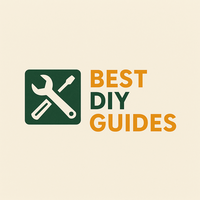Want to add a cozy and inviting element to your backyard? Building your own fire pit burner is a fantastic DIY project! It's easier than you might think, and you can customize it to perfectly fit your space and style. Plus, you'll save money compared to buying a pre-made fire pit. Let's get started!
Planning Your Fire Pit Burner
Before you jump into construction, a little planning goes a long way.
- Size and Shape: Determine the desired size and shape of your fire pit. Consider the available space and the number of people you typically entertain. Common shapes include circular, square, and rectangular.
- Fuel Type: Will you be using propane or natural gas? This choice significantly impacts the burner and connection hardware. Natural gas requires professional installation for the gas line. Propane is more portable but needs a propane tank.
- Materials: Choose durable and heat-resistant materials for the fire pit enclosure. Common options include concrete blocks, brick, stone, or metal. The burner itself will usually be stainless steel.
- Safety First: Ensure proper ventilation and clearance from flammable materials like trees, fences, and structures. Always check local building codes and regulations before starting your project.
Gathering Your Materials
Here's a general list of materials you'll need:
- Fire Pit Burner Ring: Select a burner ring appropriate for the size and shape of your fire pit. Stainless steel is the most durable and rust-resistant option.
- Gas Line and Fittings: Choose the correct gas line and fittings for your fuel type (propane or natural gas). Ensure all fittings are compatible and rated for gas use.
- Control Valve: A control valve allows you to adjust the flame height. Opt for a high-quality valve designed for outdoor use.
- Key Valve (Optional): Adds a level of safety and aesthetics.
- Flexible Gas Connector: Connects the gas line to the burner ring.
- Propane Regulator (For Propane): Regulates the pressure of the propane gas.
- Fire Pit Enclosure Materials: Concrete blocks, brick, stone, or metal sheets.
- Lava Rock or Fire Glass: These materials cover the burner and add visual appeal. Be sure to buy enough to adequately cover the burner.
- Tools: You'll need basic tools like a screwdriver, wrench, pipe cutter, drill (if needed for assembly), level, and safety glasses.
Building the Burner
This section outlines the general steps. Always refer to the specific instructions included with your burner and gas line components.
- Assemble the Burner Ring: Connect the burner ring to the gas line using the flexible gas connector and appropriate fittings. Ensure all connections are tight and leak-proof.
- Install the Control Valve: Attach the control valve to the gas line before the burner ring. This allows you to adjust the flame. If you use a key valve install that as well.
- Test for Leaks: Before placing the burner in the fire pit enclosure, test for leaks using a soapy water solution. Apply the solution to all connections and look for bubbles. If you find bubbles, tighten the connection and retest. This step is crucial for safety!
- Build the Fire Pit Enclosure: Construct the fire pit enclosure using your chosen materials (concrete blocks, brick, stone, or metal). Ensure the enclosure is level and stable. Leave an opening or gap for the gas line to connect to the fuel source.
- Position the Burner: Place the assembled burner ring inside the fire pit enclosure. Center it for even flame distribution.
- Connect to Gas Source: Connect the gas line from the burner to the propane tank (with regulator) or the natural gas line (professionally installed).
- Add Lava Rock or Fire Glass: Carefully cover the burner ring with lava rock or fire glass. Do not completely bury the burner; allow for proper airflow.
Safety Tips
- Carbon Monoxide: Never use a fire pit in an enclosed space, such as a garage or tent. Carbon monoxide can be deadly.
- Supervision: Always supervise children and pets around the fire pit.
- Clearance: Keep flammable materials at least 10 feet away from the fire pit.
- Extinguisher: Have a fire extinguisher or water source nearby in case of emergency.
- Local Codes: Always adhere to local building codes and regulations. Contact your local fire department with questions.
- Professional Installation: If you are unsure about any aspect of the installation, consult with a qualified professional. Gas lines are not something to DIY without proper knowledge.

